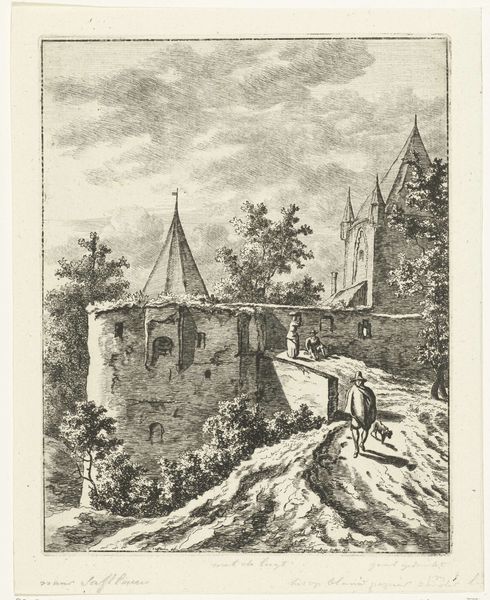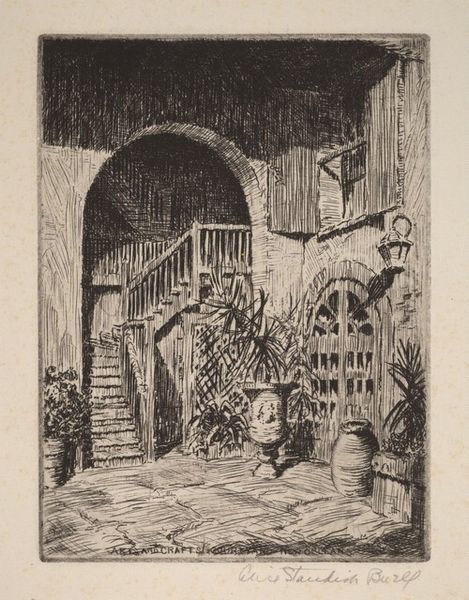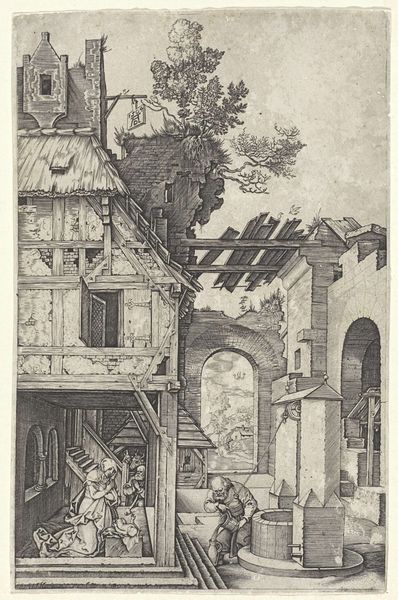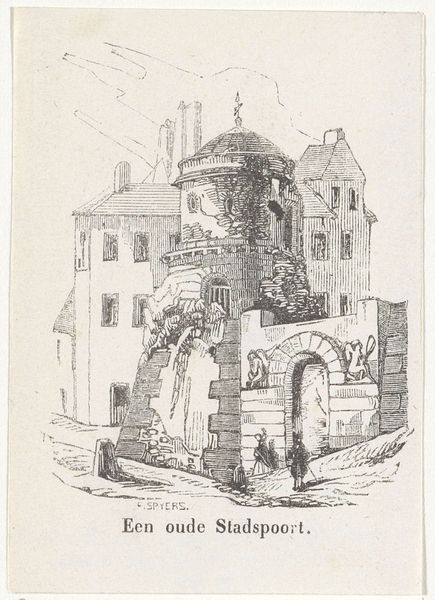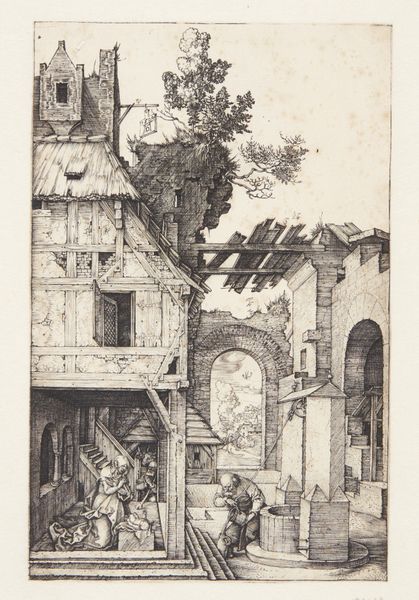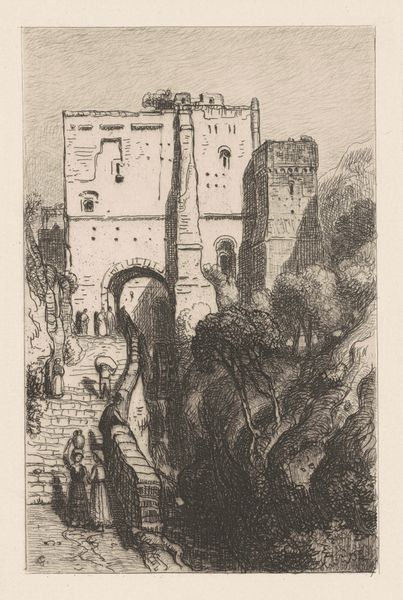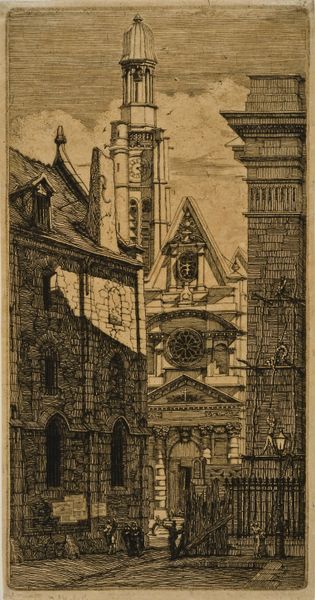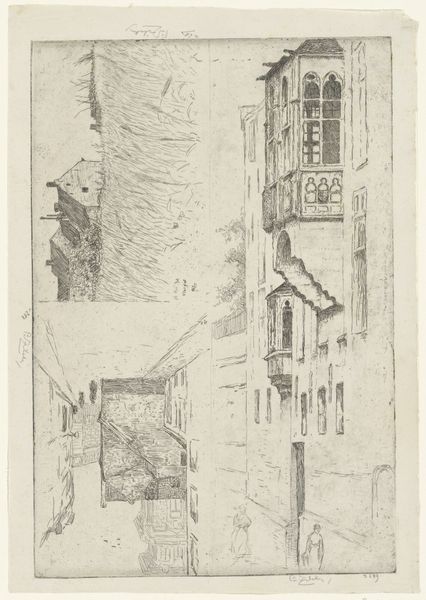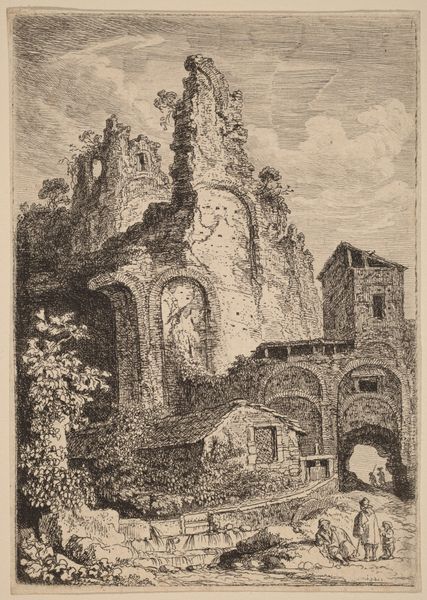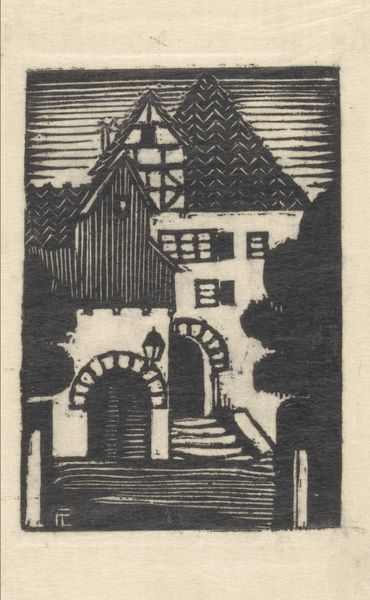
print, woodcut
# print
#
landscape
#
geometric
#
expressionism
#
woodcut
#
cityscape
Dimensions: image: 17.9 x 11.1 cm (7 1/16 x 4 3/8 in.) sheet: 26.7 x 20 cm (10 1/2 x 7 7/8 in.)
Copyright: National Gallery of Art: CC0 1.0
Curator: J. J. Lankes created this woodcut print, “Tower of Donauwörth,” in 1926. It has a somewhat stark and dramatic feel, don't you think? Editor: Absolutely, the high contrast creates a distinct mood, almost oppressive. It’s a geometric explosion. The converging lines of the buildings, cobblestone street, and tower above certainly create a kind of suffocating urban geometry, almost like being trapped within a maze. How does this visual intensity reflect the social or political atmosphere of 1920s Germany? Curator: It’s hard to ignore the historical context, right? Post-World War I Germany, specifically. The Weimar Republic was marked by economic instability, political polarization, and social unrest. Lankes' print doesn't directly depict any specific event, but the oppressive architecture certainly echoes those themes. It suggests an unease lurking beneath the surface of everyday life. Do you think that perhaps, with these sharp angular shapes, Lankes perhaps communicates this atmosphere as a symbolic representation of anxieties about the nation's future? Editor: That’s certainly viable. We see the emergence of Expressionism during this period—and its preoccupation with anxieties about industrialization and the alienation of the individual in modern society. The looming tower, with its imposing height and shadowed doorway, it overwhelms the lone figure walking beneath it, a powerful representation of individual versus the vast impersonal structures that dominate modern existence. Curator: Also interesting is his choice to print using woodcut—a very traditional technique! What is his relationship to tradition here? The geometric composition pushes the constraints of his medieval choice of material. Editor: I think there’s something powerful about his conscious employment of this specific material as a statement. By reverting to such an antiquated process—during a time defined by intense mechanical innovation—Lankes calls back to more primitive roots that pre-date modernity and mechanization. In essence, a direct political counterpoint against the progression of that society. Curator: Absolutely. Seeing this print makes you realize how much urban design can function as social and political commentary. Lankes, it seems, offers a haunting portrayal of this era. Editor: Definitely, this print’s stark imagery and underlying socio-political weight lingers long after the initial viewing.
Comments
No comments
Be the first to comment and join the conversation on the ultimate creative platform.
